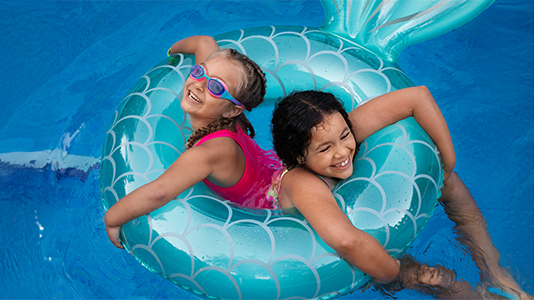A passion for keeping kids safe
With accidents as the No. 1 cause of death to kids, we are passionate about providing families tools and education to prevent serious injuries. We offer a variety of programs, including inexpensive access to swim lessons, booster seats, car seats, bike helmets and more!
Warning
Counterfeit car seats on the rise
Counterfeit car seats are a growing problem due to online shopping. Though they may look legitimate, these seats often use poor-quality materials and haven't passed required safety tests. This creates serious danger for children during accidents.
Safety topics and programs
Making your child’s environment safe starts with you. TMC for Children is here to help with guidance, free safety gear, classes, and more. Download the Parent's Guide to Children's Safety by Safe Kids Worldwide for more expert guidance.
Desert Kids Safety Program
Desert Kids Safety Program provides lifesaving products to equip Southern Arizona families and keep children safe. In partnership with the TMC Health Foundation, Desert Kids Safety program offers FREE bike helmets, home safety kits and other important home safety products. Access is simple! Call today for an appointment – (520) 324-4475.
Children Are Priceless Passengers (CAPP) classes
Learn about the effects of a collision, types and dynamics of a child safety seat, how to install and use their seats correctly in their vehicle by the use of an instructional video as well as hands-on lecture. Child safety seats are provided as part of the class fee to those individuals who don’t currently have an adequate seat.
Children Are Priceless Passengers (CAPP) classes are open to the public for voluntary participation and are required for drivers who receive a citation for a child safety seat violation.
Child passenger safety at every age
Infant seats are only rear-facing. They are designed to fit newborns up to 30 lb or more. Most are designed to be used as a car seat and carrier, and have a handle to transport baby from the car. Most infant seats have a base that stays in the vehicle for convenience.
- Babies ride rear-facing until they are at least 2 years old and have reached the maximum height or weight limit of their care seat.
- When they outgrow their infant carrier they can ride rear-facing in a convertible seat.
- Keeping children rear-facing until they are at least 2 years old and have reached the maximum height or weight limit of their car seat, as most convertible seats allow, is the safest for your baby.
Which seat in the vehicle is the best?
The middle of the back seat is the safest since the child is the farthest away from any point of impact.
What if I have a truck?
If you must put the baby in a single cab truck, it is crucial that you turn off the airbag. Read your vehicle owner’s manual for information on how to do so. If you cannot turn the airbag off manually, move the vehicle seat as far back as possible from the air bag. Front airbags deploy up to 200 miles an hour, and can injure a child, even if they are in a child restraint.
Should the handle of my infant carrier be up or down?
Read your car seat manual to see if it’s okay to drive with the handle of your infant carrier up, or if it’s recommended you put it down during travel. Each car seat manufacturer is different.
When is it time to switch seats?
A baby has outgrown their infant carrier when they reach the maximum height or weight for the seat.
Child Passenger Safety FAQs
The hard facts
Water safety
Whether you're bathing your baby in the sink or splashing around with your toddler in the bathtub, water is great fun for kids. But it's also a place where safety must come first. Among preventable injuries, drowning is the leading cause of death for children 1 to 4 years old. Children less than a year old are more likely to drown at home in the bathroom or a bucket. Children 1 to 4 years old are more likely to drown in a pool. Children 5 years and older are more likely to drown in natural water, such as ponds, lakes and rivers.
Boating
In 2013, 77 percent of all fatal boating accident victims drowned, and of those who drowned, 84 percent were not wearing a life jacket.

Free children's bike helmet program
Properly-fitted helmets can reduce the risk of head injuries by at least 45 percent – yet less than half of children 14 and under usually wear a bike helmet. Desert Kids Safety and TMC are on a mission to change this:
Bike helmets for children – toddlers through teens – are available through the Desert Kids Safety program for FREE. Call (520) 324-4475. Fitting a helmet is a must to ensure your child rides safely, so bring your child with you!
Adults and especially parents should set the example for all children by wearing a helmet every time they ride a bike. Keep yourself and kids safe!